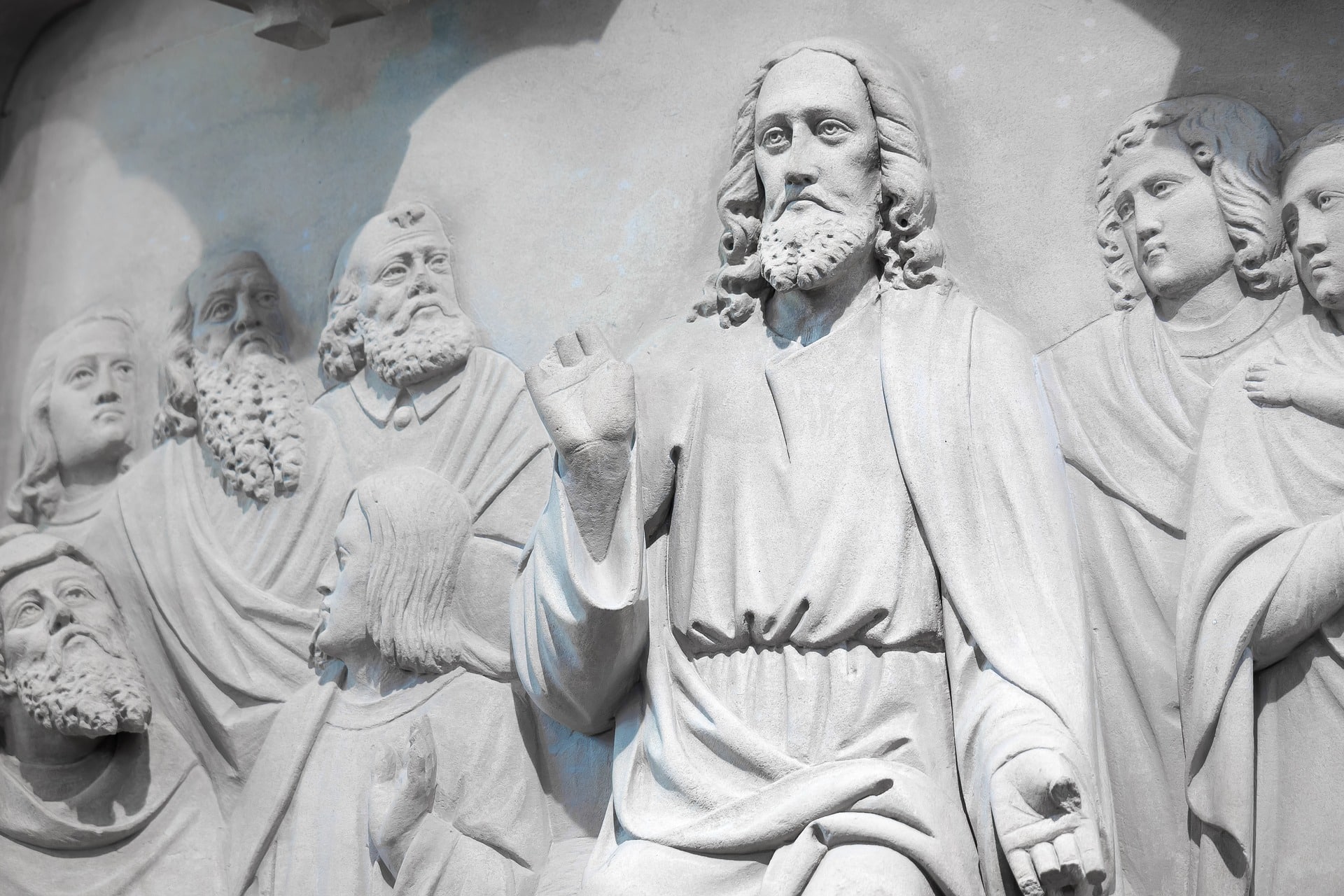
Matthew is a very subtle writer. A lot of people are not aware of the clever structure of his gospel.
Matthew is writing as a Jew to other Jews, making the case that Jesus is the Jewish Messiah, sent by the God of the Jewish people in fulfillment of Jewish prophecy. To underscore this, he writes his gospel in such a way as to echo the Torah, the first five books of the Old Testament.
If you want to get the hang of it, think of the gospel of Matthew as five books sandwiched between two bookends. The bookends are the Infancy account at the beginning and the Passion/Resurrection account at the end. In between, Matthew carefully arranges his material into five “books” consisting of alternating groups of “narrative” and “discourse” materials. In the “narrative” section of each book we hear about stuff Jesus did. In the “discourse” section, we hear about stuff Jesus said.
So, for instance, Matthew 3:1-4:25 is the “narrative” section of Book 1 while Matthew 5-7 is the “discourse” section. So we first hear about Jesus’ baptism and his temptation in the wilderness, followed by the Sermon on the Mount.
“If the law of Moses addresses the floor of human behaviour, Jesus has his eyes on the heavens.”
The reason Matthew does this is because he wants us to see that Jesus is the New Moses. Like Moses, Jesus too passes through the waters of a river and goes into the wilderness. And like Moses he too goes up on the Mountain to promulgate a new law to a new Israel. Matthew emphasises the oracular nature of Jesus’ teaching by saying, “Seeing the crowds, he went up on the mountain, and when he sat down his disciples came to him. And he opened his mouth and taught them, saying…” (Matthew 5:1-2).
That is the context for what we are reading when we read the Beatitudes in Matthew 5. They are the opening of the New Law of the New Kingdom of Israel by the New Moses. The nature of that law is different from and transformative of the Old Law of Moses. As Jesus himself says, he does not come to abolish the law and the prophets, but to fulfil them (Matthew 5:17).
So nothing Moses has to say is contradicted, but much is transcended. This is why Jesus keeps telling us, “You have heard that it was said… but I say to you.” Most of the Ten Commandments of Moses speak to our actions (killing, adultery, theft, lying, etc). But Jesus means to root out the source of those sins in the heart.
More than this though, he means to write the law on our hearts and not merely on stone. If the law of Moses addresses the floor of human behaviour, Jesus has his eyes on the heavens. The law says, in essence, “If you can’t love your neighbour, at least don’t beat him to death with a baseball bat, steal his stuff, and run off with his wife.” This is not the snow-capped summit of human happiness. It’s the bare minimum of human decency.
The Beatitudes, in contrast, are all about the way to happiness. That is, after all, what “beatitude” means. And when you think about that, they are really weird and counter-intuitive, much as losing your life to save it is not what most people think of as the quick ticket to bliss.
Consider what Jesus blesses: poverty, mourning, hunger, thirst, meekness, being persecuted. And even the things that sound rather nice, such as peacemaking and purity of heart, are not nearly as fun as they sound. Martin Luther King, Jr. and Gandhi were both murdered by an ungrateful humanity for their efforts at peacemaking. Jesus makes peace “by the blood of his cross” (Colossians 1:20). And purity of heart is to will one thing: the will of God. It is the work of a lifetime of penitential suffering for most of us to reach such a goal.
So why does the Church often kick off Lent with the Beatitudes? Because the blessings of the Beatitudes are Lenten blessings. They reveal that self-denial—in a word, taking up your cross—issues in resurrection and new life, just as Jesus’ self-denial and cross did.
So for the next three weeks, we are going to look at the Beatitudes as we roam through the desert of Lent with Christ. Stay tuned!
Related:
- Mark Shea: blessed are the poor mourning and meek
- Mark Shea: blessed are the hungry the merciful and the pure
- Mark Shea: blessed are the peacemakers and the persecuted
